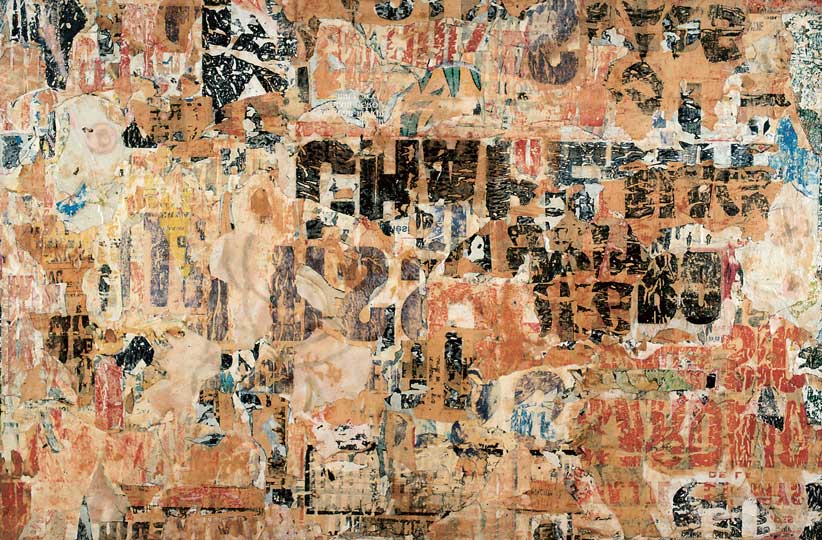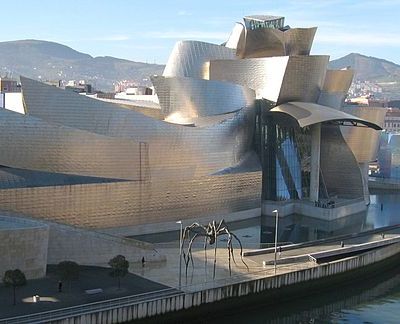A new exhibition at the Schirn Kunsthalle Frankfurt celebrates the early work of the Affichistes. Curator Esther Schlicht explains who they were, and why their work merits more public and critical attention.
Click here for a gallery of highlights
Can you tell us a bit about the exhibition?
‘Poetry of the Metropolis’ at the Schirn Kunsthalle Frankfurt provides an extensive overview of the Affichiste art movement that emerged in Paris and Rome in the 1950s. The Affichistes, known for their décollages based on tattered, torn, and weathered posters found in the streets, have been largely ignored and have received little acknowledgment in terms of their relevance within the post-war avant-garde. The exhibition sheds light on their originality and radicalism and illustrates the historic importance of the movement, also in view of further developments in the arts up to the present.
What makes this a distinctive show?
It is the first exhibition outside of France to assemble the major works of the Affichistes from the 1950s and 1960s. While they are for the most part regarded as having been part of the 1960s, our exhibition focuses on the early, formative phase of the Affichistes, thereby emphasising their role as pioneers. It also makes visible the experimental context in which the movement emerged as well as the cross-disciplinary thinking and activities of the artists, who also worked with poetry, onomatopoeia, the performance, the happening, photography, and film.
How did you come to curate this exhibition?
While working on two previous exhibitions, I was repeatedly confronted with the Lettrism movement founded in Paris in the 1940s, and I became aware of its importance for the development of the arts in postwar Europe. There is a very strong link between Lettrism and the Affichistes, and these very early movements have received much less attention than the later developments of the 1960s. In discussions with Roland Wetzel from the Museum Tinguely in Basel, we discovered a shared interest and decided to collaborate on this exhibition.
What is likely to be the highlight of the exhibition?
It will be amazing to see how these historical décollages that use posters, a transient material that ages so rapidly, have maintained their relevance and their original radicalism and radiance.
And what has been the most exciting personal discovery for you?
Our general idea of the early post-war period in Paris is still very much informed by the strong influence of Jean-Paul Sartre and Existentialism. In fact, the artistic scene was extremely rich and heterogeneous, and it is intriguing to see with how much humour and nonchalance the French Affichistes François Dufrêne, Raymond Hains, and Jacques Villeglé used from square one. Their writings and those by some of their friends, in particular French painter and poet Camille Bryen, were a real discovery and helped us to better understand the path they took.
What is the greatest challenge you faced in preparing this exhibition?
The exhibition addresses an entire art movement, but includes works by only five different artists. So one of the challenges was to find the right balance between presenting the development of a movement over a period of two decades, and providing an opportunity to appreciate each artist and his specific approach individually.
How are you using the exhibition space? What challenges will the installation pose?
We have built some huge free-standing walls reminiscent of billboards, which will certainly look very impressive together with the sometimes very large-scale works. Also, we broke through some walls in our galleries in order to connect the exhibition with the city and streets. This creates a very special atmosphere.
Which other works would you have liked to include?
Although they originated in the street, the works featured in the exhibition are extremely delicate, because the cheap poster paper often pasted in multiple layers is for the most part in poor condition. It was therefore no easy task to convince lenders to relinquish them for the duration of a two-venue touring exhibition, and I am all the more delighted that we could secure nearly all of the major works that seemed important for the show.
‘Poetry of the Metropolis: The Affichistes’ is at the Schirn Kunsthalle, Frankfurt, from 5 February–25 May.




